A Nearly Empty Island
It’s the morning of New Year’s Eve, and the exact moment I step out of my tent, I spot a dorsal fin. It rises briefly into the mist from the placid Brickhill River and vanishes. I blink sleep from my eyes. After 10 minutes waiting for a repeat appearance, I’m uncertain it was a fin at all. The tide is moving swiftly past, carrying a caravan of floating reeds. Maybe that’s what I saw.
Otherwise, the area surrounding Cumberland Island has been shrouded in fog since I started paddling in a near whiteout yesterday morning from Crooked River State Park. I’d stacked my fat bike in thirds, lashed to the bow of my packraft, which left just enough space for half strokes with my paddle. Despite following the falling tide, it took me three hours to go a disorienting five miles, including a close call with a reckless motorboat while crossing the Cumberland Sound. Along the way, I think I checked the map every few minutes — and my blood pressure every 10.
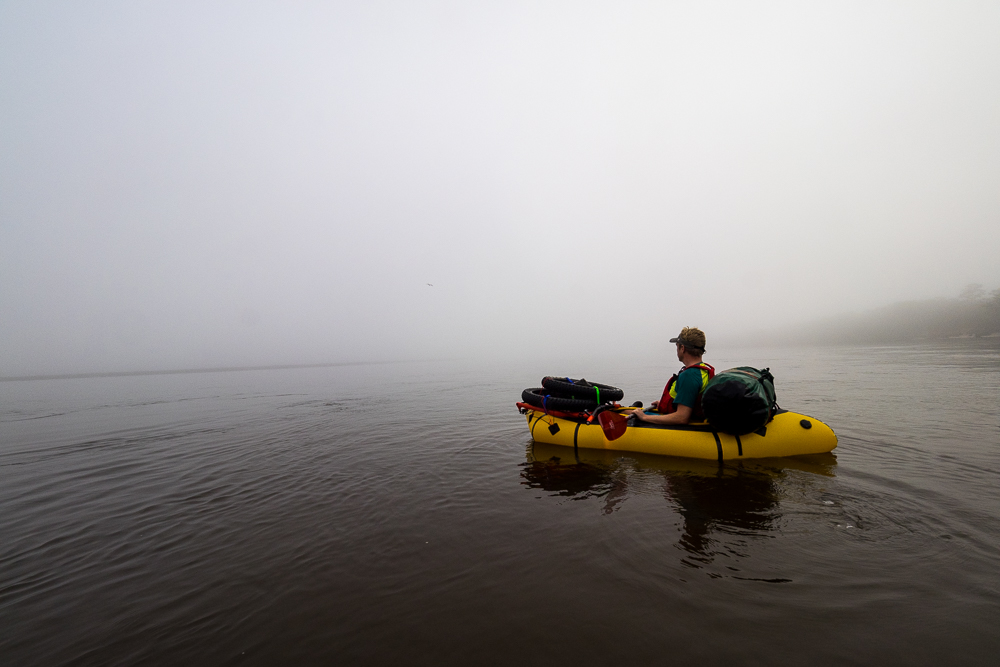
My original plan was to take the ferry — with my bike — to this lesser-known national seashore, which is also the largest barrier island in the Southeast. When the government shutdown suspended the ferry service, I pumped up my packraft, printed maps and tide charts, and hit the road for Georgia.
After breakfast in camp at Brickhill Bluff, I de-rig my bikepacking bags. Yesterday I’d landed at Plum Orchard dock and ridden the main road north, with all my gear, into the wilderness half of the island. Now I reset my bike for a full-day ride and I’m off.
I stop to visit with a group of seven sea kayakers camping nearby. As far as we can tell, we’re the only visitors currently on the northern half of the island, which has a few primitive tent sites with artesian wells. Unlike federally designated wilderness, this National Park Service–designated area allows for some grandfathered private in-holdings. Best of all, bikes are allowed on the few unpaved sandy roads that penetrate a dense woodland forest of twisty salt-pruned oaks draped in Spanish moss.
I begin by riding several miles farther north. The road quickly roughens, and when it veers away from the bluff into thick woods, I turn back south. For my first day on the island, my goal is to reach the southern tip.
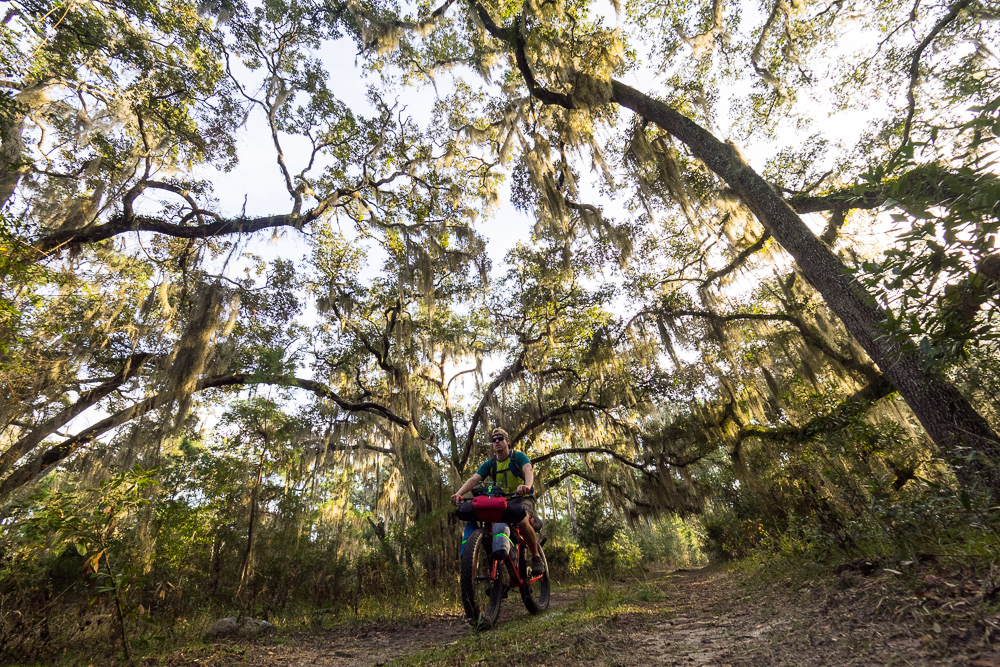
My first stop is back at Plum Orchard, where the sun makes its first break through the lifting fog. Like most of Cumberland Island, the intact mansion was once owned by members of the Carnegie family, steel magnates from Philadelphia. After a battle over conservation versus development, the island was sold to the NPS in 1972 and established as a national seashore.
In the trees, juvenile storks fight for branch space with an adult stork and one out-of-place roseate spoonbill. Turns out it’s a rookery. Also, there’s supposedly a 14-foot resident gator that sometimes lurks around the edges.
I stop by the NPS hunting camp, which is used for six managed hog and deer hunts each year. A group of four canoeists has arrived on the morning tide and are setting up camp at the invitation of a furloughed NPS staffer who stuck around — unpaid — to keep the water running.
Like me, the paddlers brought a copy of Untamed: The Wildest Woman in America and the Fight for Cumberland Island by Will Harlan. The book tells the story of Carol Ruckdeschel, who lives in a ramshackle compound near the northern tip of the island. A self-taught biologist, she studies local sea turtles and has long advocated for preserving the island.
Continuing south on the main road, an ATV whizzes past. The driver is an older woman, grinning and waving, wearing a floppy fishing hat that’s folded back from the wind. Wouldn’t you know? It’s Carol Ruckdeschel.
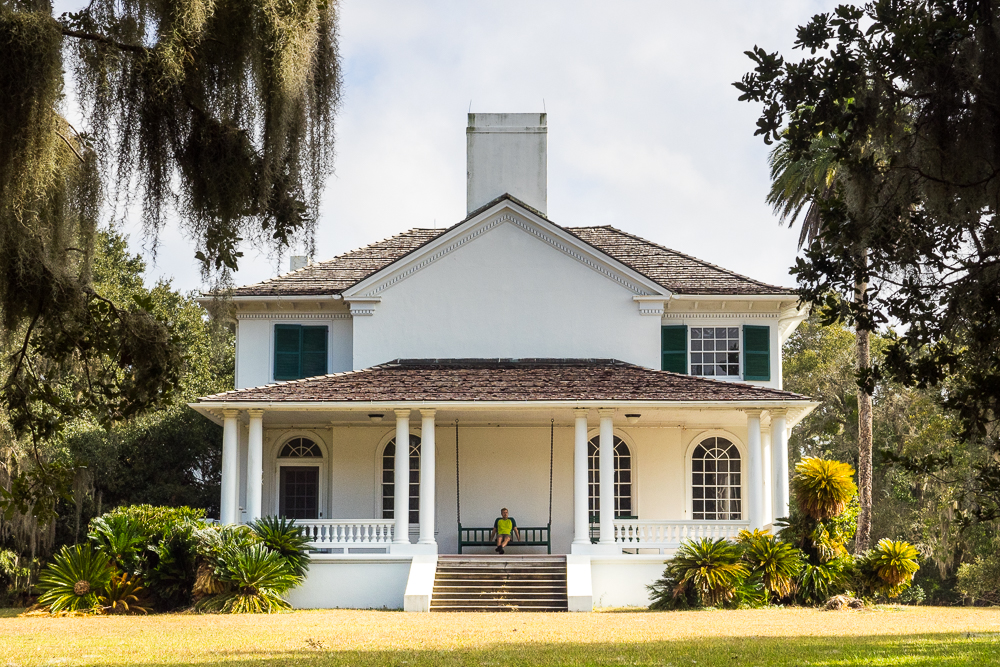
As I pass out of the wilderness area, signs of limited development appear. Planted oaks overhang the road like arched street lamps. Scattered nearby are restored buildings of the Stafford Plantation, still owned by a Carnegie descendant. At the clearing for the old airstrip, where a few wild horses graze, I stop at the tiny Stafford cemetery: two graves, two tombs, and one tiny headstone. The eroding walls are coquina, a limestone of shell fragments.
Two young cyclists riding rental bikes stop to say hello. They’re staying at the Greyfield Inn, the only private lodging on the island. I turn in there next, finding a high-class estate of manicured lawns and cozy cottages. After learning the price, I head back out.
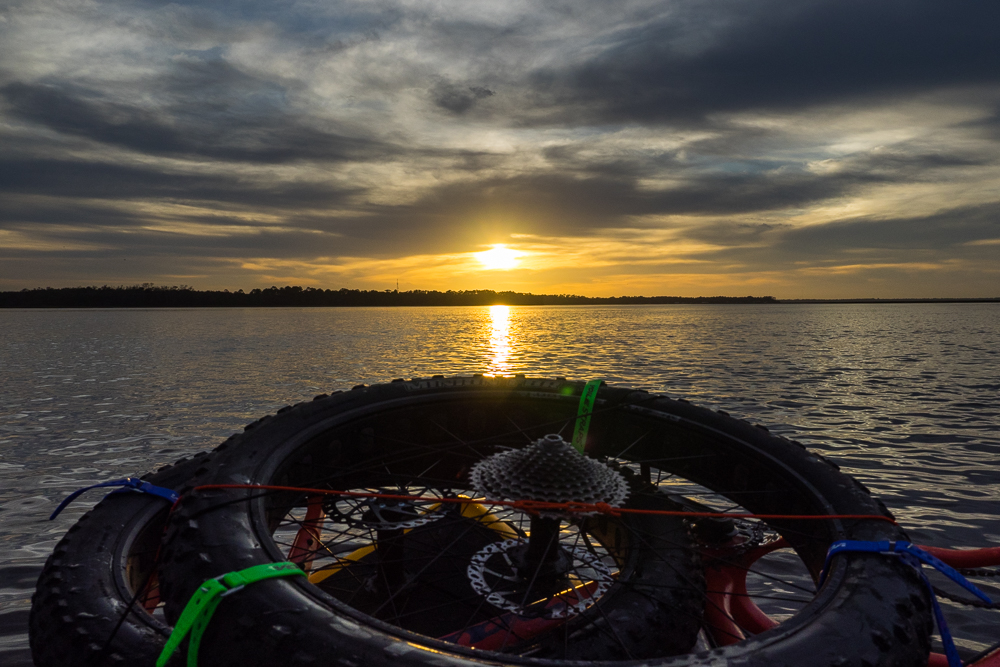
I pass Sea Camp on the ocean side and the NPS dock on the sound side. I’ll check those out later; I push onward to the day’s big highlight. The southern road is graded, flat, and lined by saw palmettos. In the bushes, armadillos startle and jump. A few private pickups pass, having just arrived on private ferries, with visitors in the beds heading to the beach. They’re taking advantage of the shutdown. And while I could see some diehard preservationists being outraged at their temporary presence, they don’t seem to be doing any damage. Over 72 hours, I’ll see maybe a dozen such private vehicles, everyone well behaved, friendly, and driving slowly with heads out the windows, awestruck at the scenery around them.
Dungeness, once the largest mansion on the island, is now in ruins near the southern tip. The mansion burned in 1959, allegedly by arson. I imagine a raucous Gatsby-like party during its heyday overflowing with people and a single old-timey photographer, with a flashbulb camera, perched on a ladder above the gushing fountain.
I want to get a photo from that same vantage point (minus all the flappers — I prefer this island as is), but without a ladder the urge seems pointless. Then I spot a massive palm frond fallen from a recent storm. Before I can talk myself out of it, I’m fixing my expensive camera to the tip of this frond and hoisting it a dozen feet into the air. While the timer goes off, I try to minimize sway like a circus stilt performer.
Just then, of all the moments on this nearly empty island, a couple walks by and stares at me like I’m the arsonist.
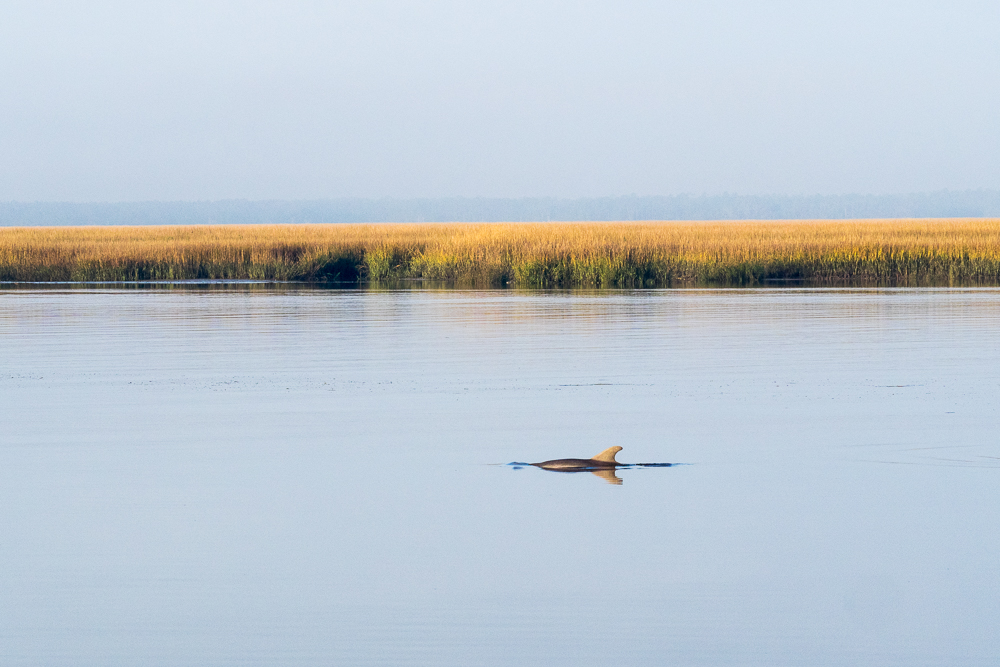
I still have 48 hours left. Eighteen miles of nearly empty beach to ride. A whole northern wilderness to explore. A legendary lady named Carol I hope to meet. And, oh yeah — that dorsal fin? It was a dolphin. There’s a dozen of them swimming outside my tent the next morning. Having just as much fun as the lucky few of us on this narrow strip of land.


